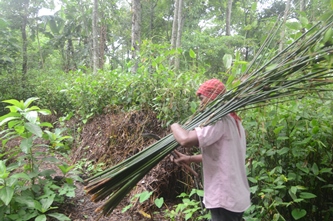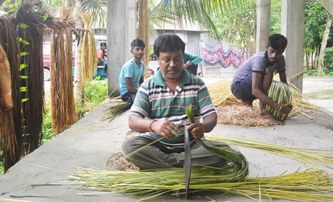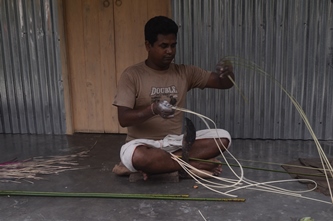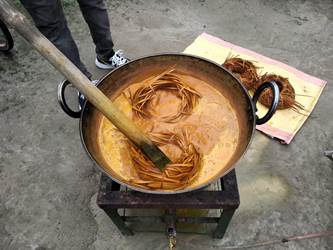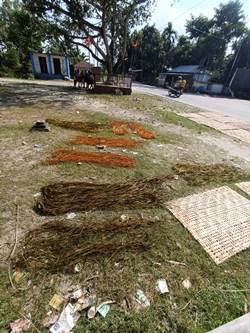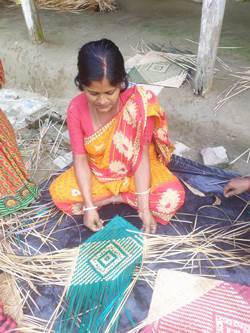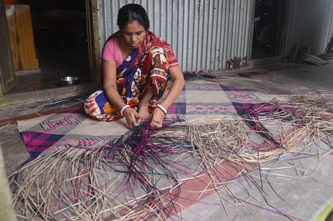Process
Preparing the cane strips:Cutting and preparing cane strips are done by men. After cutting the cane, it is soaked in water and sliced length-wise to obtain strips according to one’s specific needs. The cane is stripped in layers. The tough pulpy interior is first discarded and used for fuel when dried. The ash, when diluted and strained is considered as an excellent detergent and has strong bleaching qualities. The top layers of the stem and the branch are then sectioned into separate qualities of cane. The first cut that is obtained is called “Chhotu” which is used for rough work owing to its extremely low and fibrous quality. The layer above that is referred to as Buka. Buka can be further layered down to another level to obtain the finest quality of cane that only contains the shiny top layer of the cane. This cut is used for finest works and provides or a smooth and uniform finish. The surface texture is silky smooth with minimal apparent fibre. For making Sitalpati, the cane slips are kept in rice water for 24 hours and then boiled in the same. Then it is washed in water and kept in sun light for drying. After drying, it is left on the ground for the night dew to accumulate on it to increase the finesse of the fibre. There is another variation where the cane slips are kept in water for 6-7 hours and not boiled.
Colouring:The colours of the strips are obtained after their slicing through various methods of processing. The natural reddish brown hue of the cane is obtained by soaking and sun-drying the strips alternatively over a whole day. The natural white tone is created by boiling strips and then sun-drying them.
Dyeing:The craftsmen have adopted, after the design trainings, the dyeing of Sitalpati strands with natural and vegetable dyes. However, they nowadays use Azo-free dyes to add vibrant colours to the weave. The process involves cutting the strands, making appropriate bunches. Colours are mixed in proportion and adding boiling water into it. The strands are soaked in the dye and after boiling it, the fibres is then washed with clean water and are sun dried.
Weaving: Women do the weaving:Women do the weaving: 2-dimensional flat weaves. Common weaves are mostly diagonal. 2 or 3 slips overlapping 2 or 3 slips respectively (called 2 or 3 gachha). The open ended slips of these weaves are closed on themselves. This is called muri bandha. Simple geometric patterns are developed using white (sada sital) and red (laal sital) slips of cane in both straight and diagonal weaves. The open ends of these weaves are closed on separate slips running parallel to that side. Straight woven patterns (chiknai) are rare currently. Complex imagery is also developed using the diagonal weaves (peacocks, lakshmi’s pot, elephant, deer, fish, etc). Such skill is rare in the community. Extremely fine slips are used to develop delicate designs and intricate patterns called Bhushnai.
